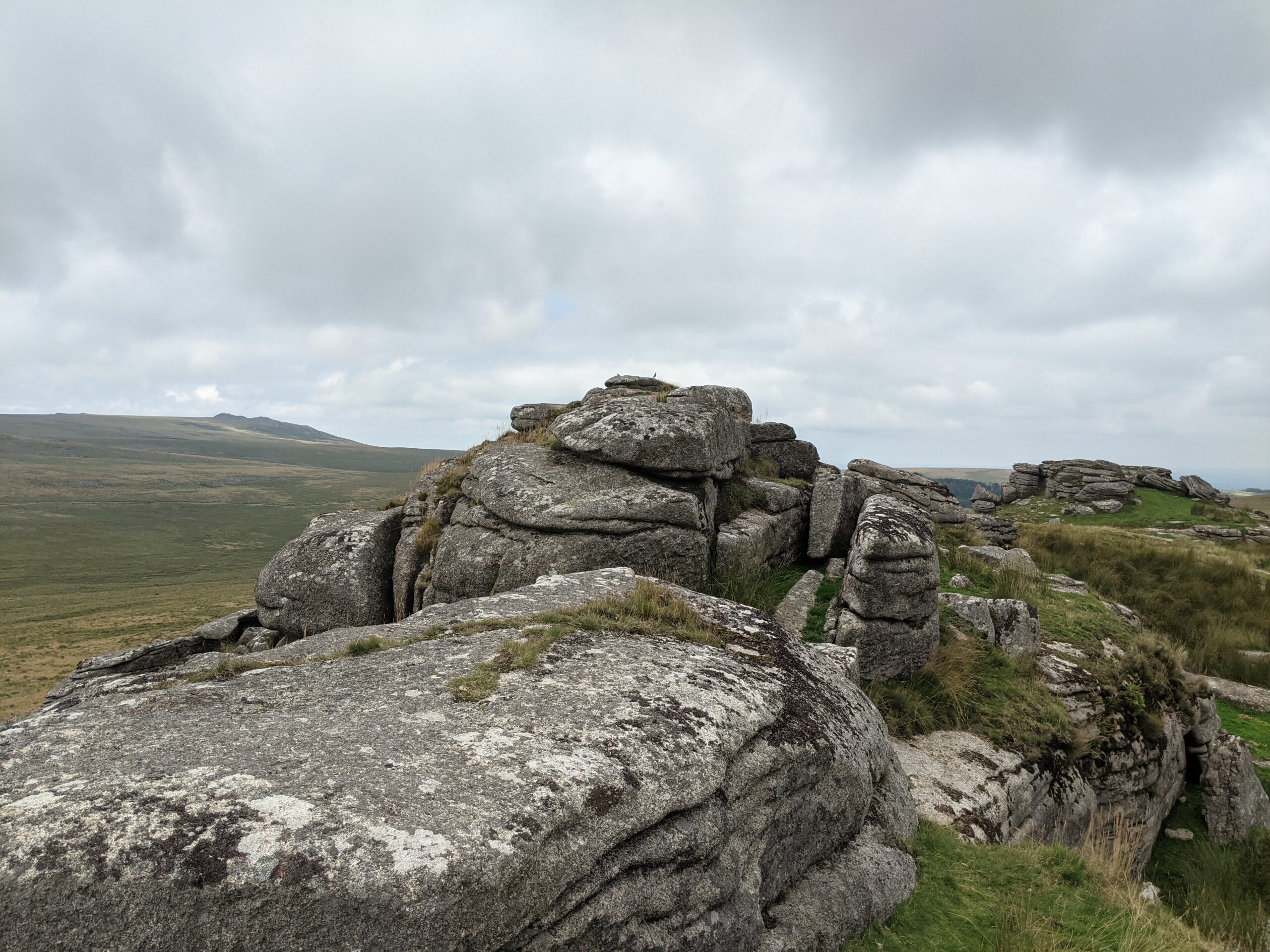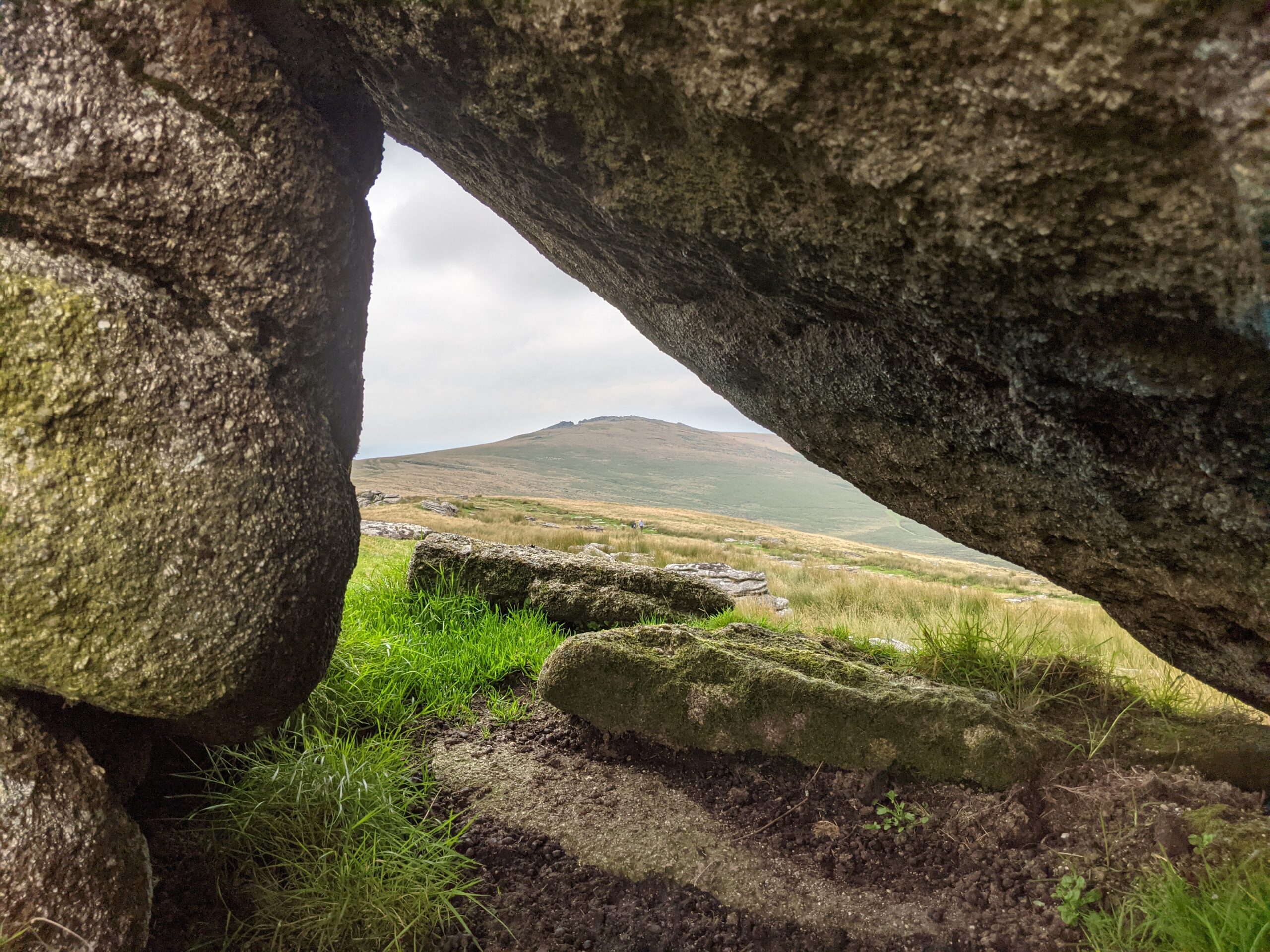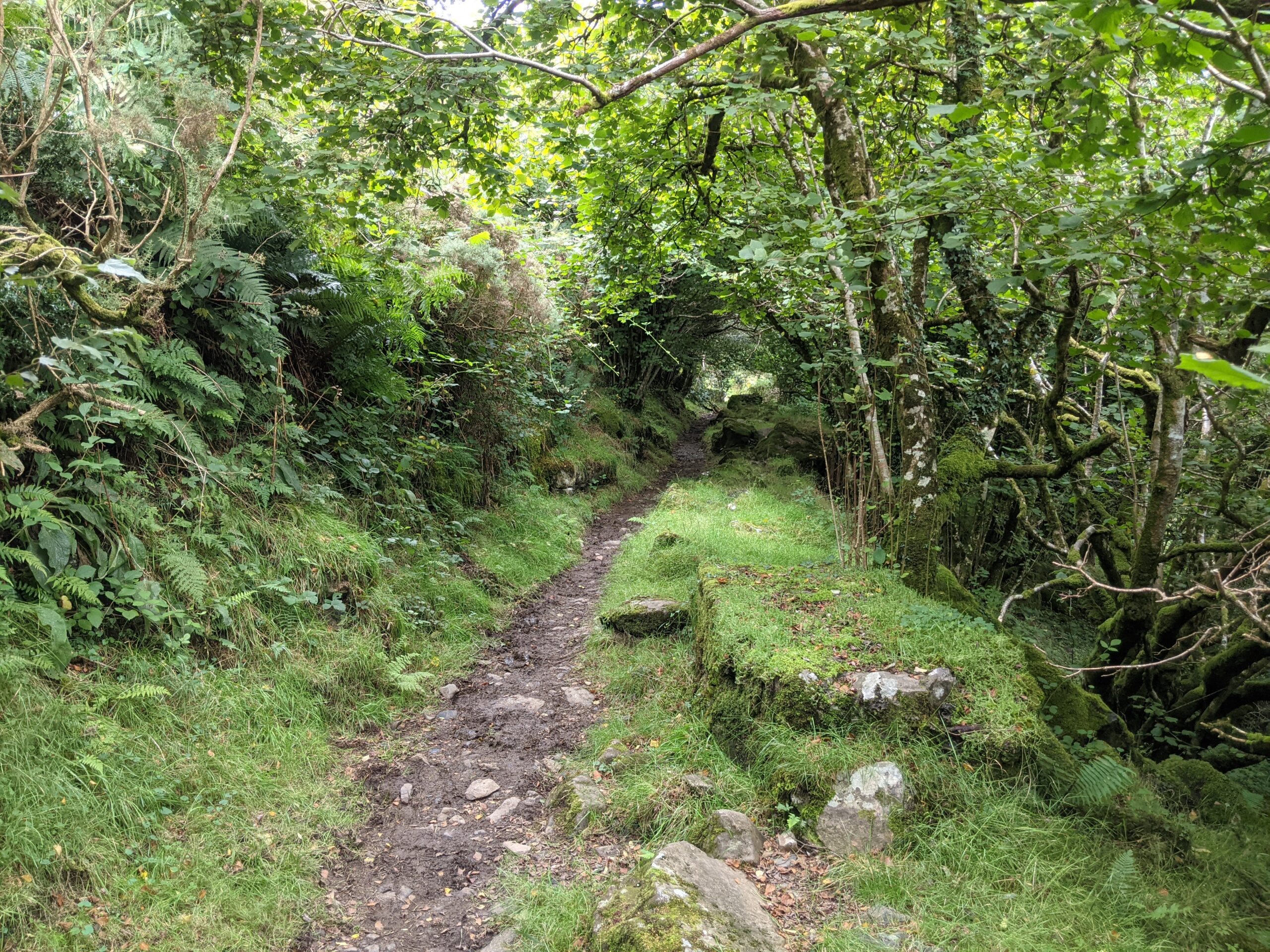Hiking on DartMoor: Cosdon to Belstone
Cosdon Hill isn’t considered a ‘tor’, but it is an extremely steep climb up all the same. From the road near South Zeal/ Sticklepath, the incline is around 330 metres in under two miles, which makes it a gruelling way to begin a hike.
Once up at the top, though, you are well and truly on Dartmoor – with views over the rolling hills and valleys, as well as plenty of tors. For those unfamiliar with them, tors are large granite formations often found on the peaks, that characterise Dartmoor.
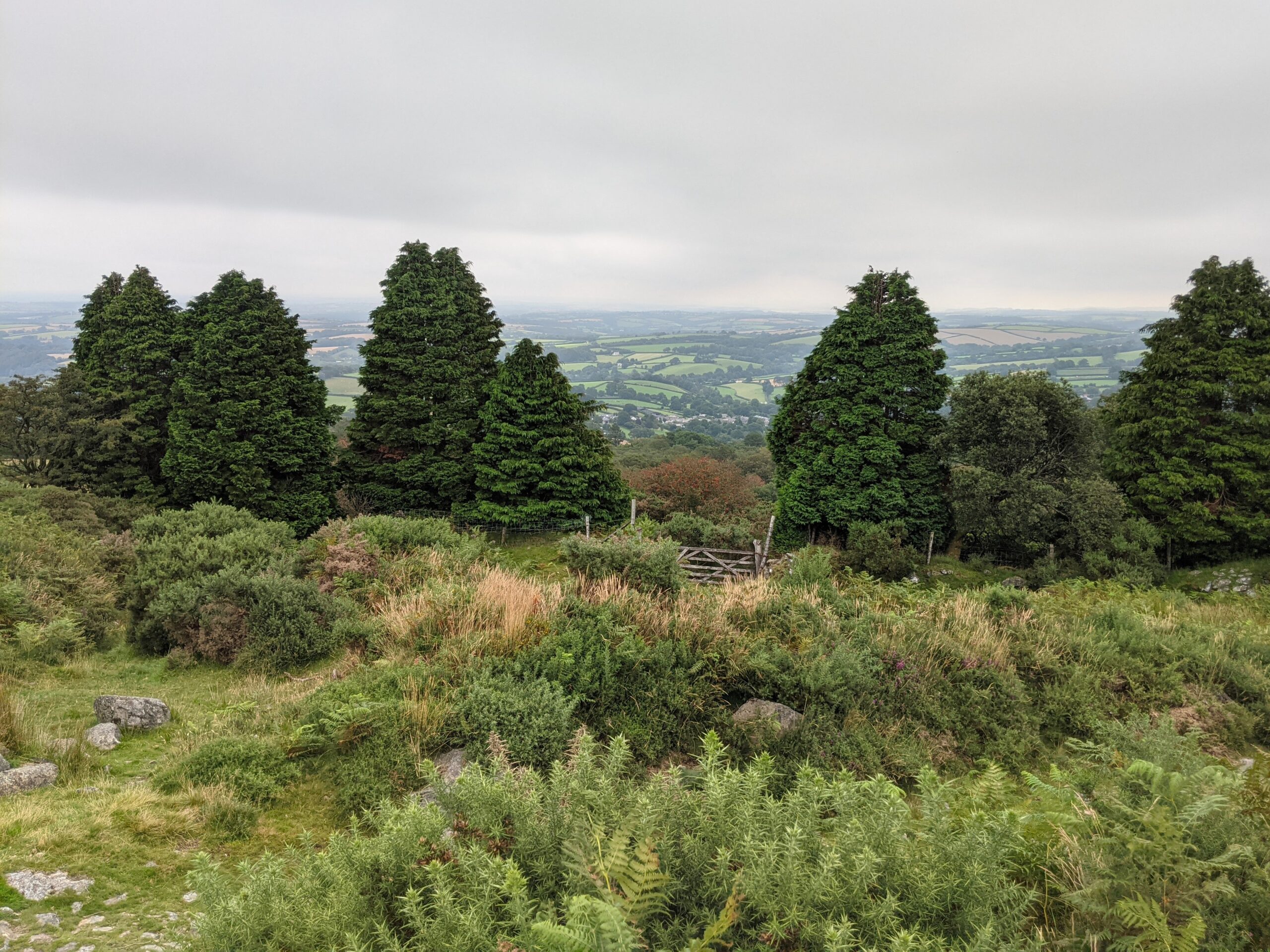
This was one of those hikes with no set route, but as Dartmoor allows, freestyling the way as we went.
The steep path up to Cosdon slices through long grass, ferns, and colourful wildflowers – all typical features of the moorland. As we worked our way up, we were treated to a reverse view away from the moors, over the surrounding countryside.
We encountered a herd of cows, that were blocking the trail. Because there were calves with them, we took a detour around, so as not to disturb or anger a protective mother. We also spotted the famous wild ponies of Dartmoor, that you will often finding grazing throughout the park.

The ground levels out at Cosdon, and it is a gentler tramp south to Little Hound Tor – one of the more modest tors on Dartmoor. We followed a trail that turned steadily southwest, then west, as it took us down into a valley – separating us from the hillside opposite us – towards the centre of the park.
Following one of the less well-defined paths, we dipped down into long grass that blanketed the hillside. We then met the narrow River Taw where, fortunately, there was a crossing point made of large stones to help us across.
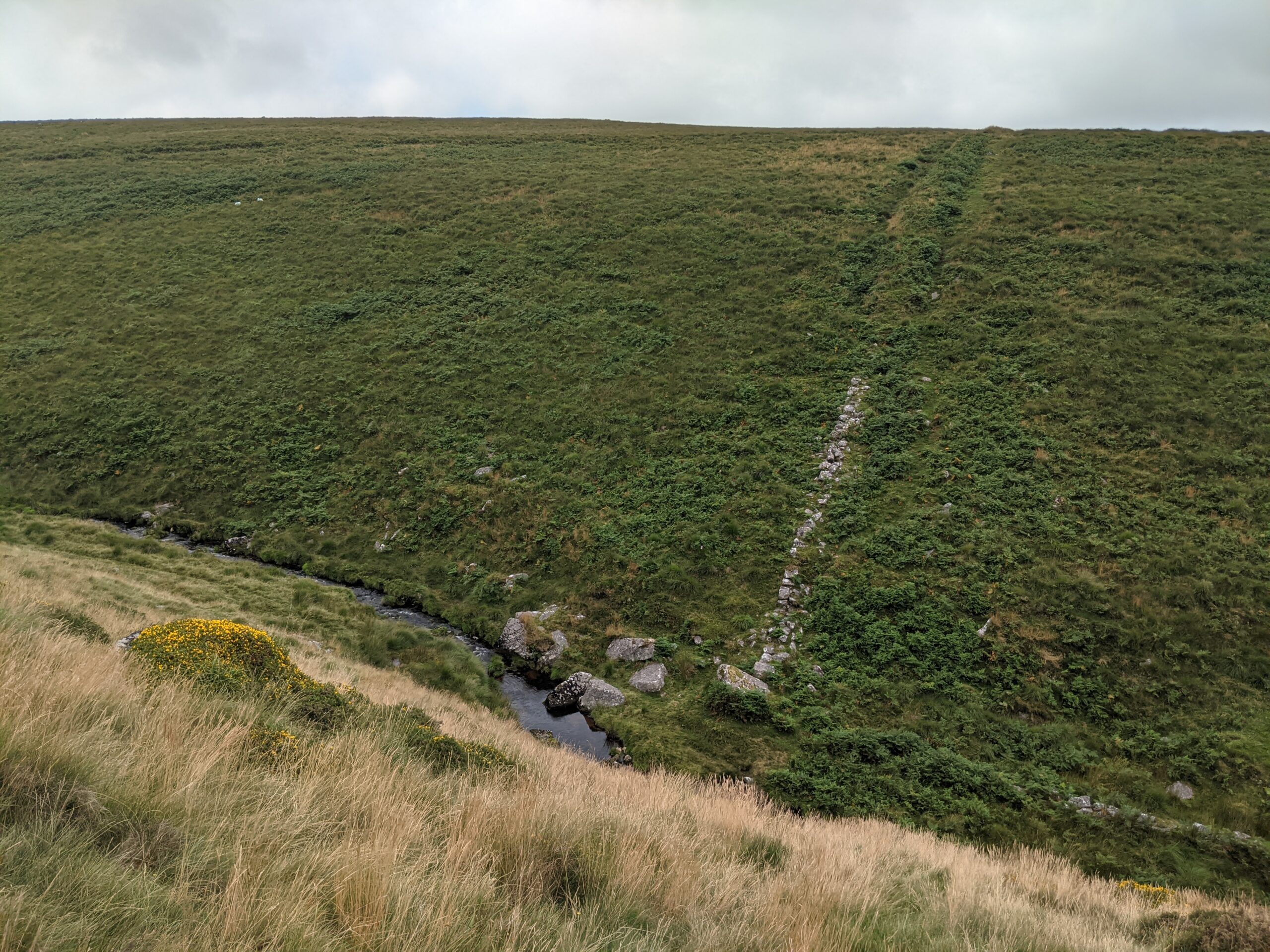
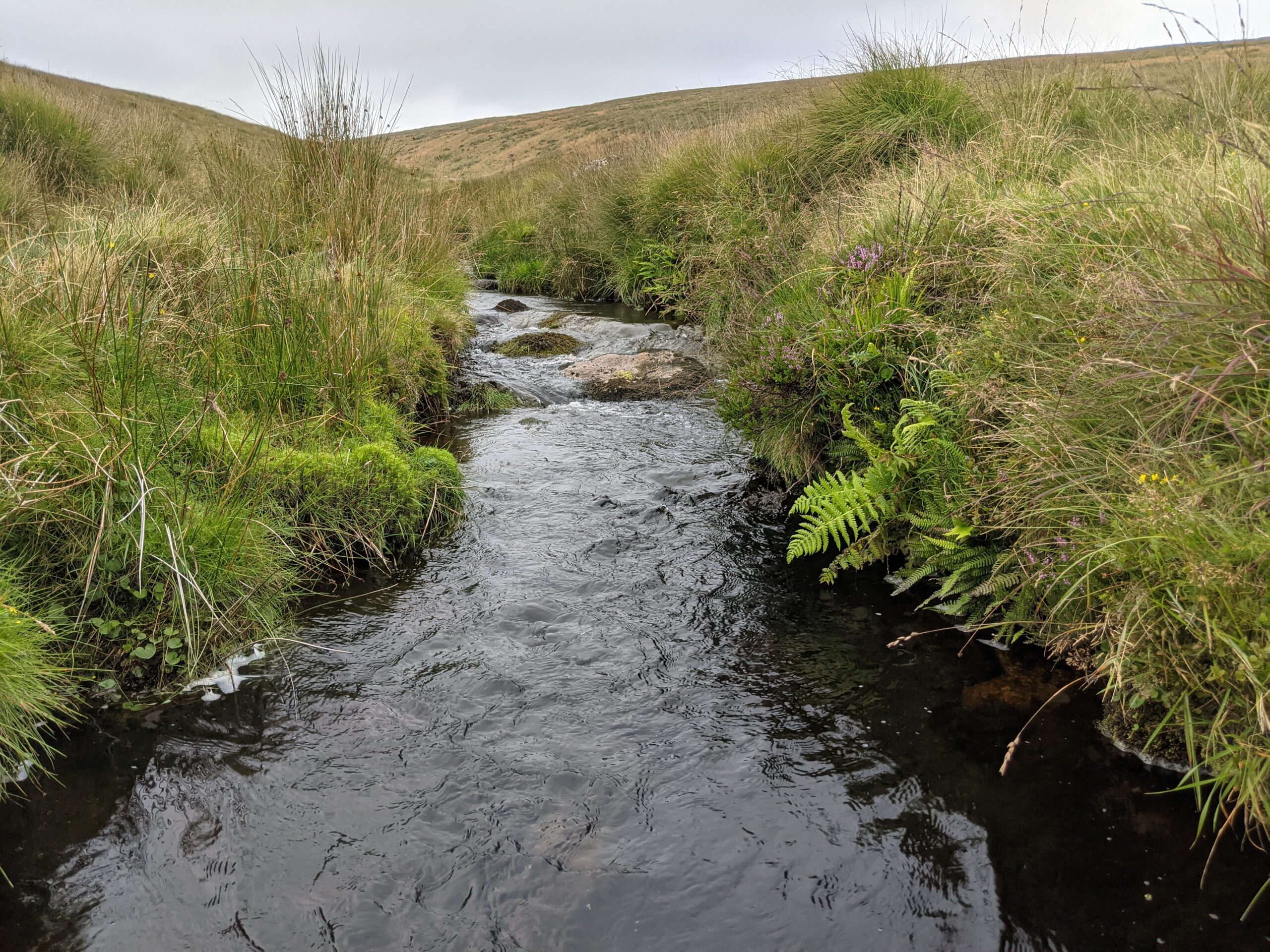
After crossing the river, it was a steep climb up, that required another burst of energy to conquer. Once up, we found ourselves at a junction of various trails heading in every direction, displaying the endless possibilities for hiking here.
We took the north-bound trail, towards Oke Tor. This was another smooth walk, with great views either side. Even on a cloudy day, we could see far and wide over the moors, including the nearby High Willhays – the highest point on Dartmoor.
I think the defining features of Dartmoor, that can be fully appreciated when we had made inroads to the centre, is how vast and desolate it is. We saw very few people out, even in early summer, and it felt devoid of human disturbance for miles around.

We saw out the walk with a trudge up to Belstone Tor, before a steep decline down to the village of Belstone. The total walking time was slightly under three and a half hours, covering ten and a half miles. There was plenty of ups and downs, done at a decent pace – making the hike challenging, but manageable.
This walk was a great example that you can create your own route – and make it shorter or longer as you wish. The appeal of Dartmoor is the wilderness and the chance to get away from urban life, in a variety of surroundings, while it is accessible and can be adapted to your level of ability.
